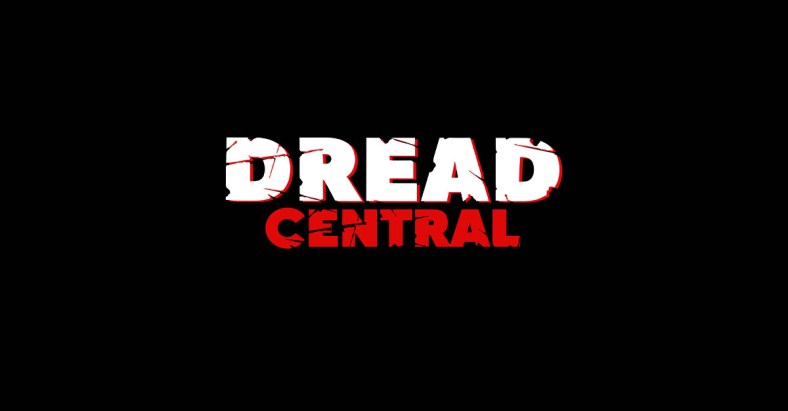Brennan Went to Film School: DEAD SNOW and the Fallacy of the Cabin in the Woods

“Brennan Went to Film School” is a column that proves that horror has just as much to say about the world as your average Oscar nominee. Probably more, if we’re being honest.
It’s a Winter HorrorLand here at Dread Central, so you know I sat myself down in front of my favorite 2009 Norwegian Nazi zombie export Dead Snow with a notepad in hand, ready to mine it for some deep subtext. But I realized two things. 1) Nobody needs an article that talks about Nazis for longer than absolutely necessary. And 2) I’m still stuck on a single bit of dialogue from the first act.
The film nerd Erlend starts up a meta conversation about how many horror movies start with a group of young people heading up to a remote cabin in the woods, citing examples such as Evil Dead 1 and 2, Friday the 13th, and April Fool’s Day. Now if you’re insufferable like me, that list will instantly raise your hackles. April Fool’s Day? That’s a mansion on an island. And Friday the 13th takes place in a campground, which does have cabins but isn’t really the same thing as an Evil Dead or a Dead Snow.
This conversation got me thinking. The “cabin in the woods” trope is pretty much synonymous with horror, but when you take a step back and really look at it, there aren’t really that many widely known entries in the subgenre. Meta horror movies like Tucker and Dale vs. Evil or the appropriately titled Cabin in the Woods have perpetuated the idea that all kinds of pretty young things are getting mutilated in isolated cabins left and right. When you start digging into that barrel though, you hit bottom almost instantly. Which is why the Entertainment Weekly list of “best cabin in the woods movies” that I read as research for this article included such desperately dubious titles as Misery and The Strangers.
Sure, there are lots of movies that take place in the woods (The Blair Witch Project, The Burning, etc.) and even more that take place in isolated locations (this is where your Misery/Strangers argument comes in), but if we’re looking for a genuine, unadulterated cabin experience that isn’t a super deep cut indie movie, it’s pretty much Evil Dead, Cabin Fever, or bust. So why does the cabin persist as such an iconic horror cliché?

I do think the answer lies at the source of all stereotypes: lack of representation. Mainstream audiences are only exposed to a handful of horror films, and as usually happens, the few come to define the many. But there’s another reason that the idea sticks in the craw of our collective subconscious as well, and it’s a much more metaphorical one.
Throughout the history of storytelling, the forest has represented the vast and unknown dangers of the wilderness. In nursery rhymes and fairy tales, it is home to strange creatures waiting to spirit young children away: witches with gingerbread houses, big bad wolves, and the like lurk behind every tree. In literature it tends to represent the subconscious and the terrors that lurk in the human mind, where people learn dark and terrible secrets about the world and themselves. From the adulterous tryst in The Scarlet Letter to the twisted resurrections in Pet Sematary to several climactic moments in Harry Potter, the forest has been home to the deepest, darkest reflections of our wild selves.
Typically in “cabin in the woods” movies, young people travel into the forest to be severed from the normal bonds of propriety, in order to drink and have sex and do all kinds of things that wouldn’t be deemed appropriate in regular society. The cabin itself is the last bond they have to the world they’ve left behind, but unfortunately being freed from those bonds also exposes them to the dark side of the wilderness, penetrating the meager shred of safety the cabin provides as they’re destroyed by whatever axe-wielding madman/demonic entity/flesh-eating bacteria lurks in them there woods.
In Western culture, this fear and suspicion of the woods is elemental and deep-rooted, so it makes perfect sense why these particular films would be memorable above a lot of your average horror fare. It doesn’t excuse people being just plain wrong about the settings of certain movies, but it’s perfectly natural to be drawn to the format and assume that its particular symbolism is universal, considering that it draws on such a rich vein of metaphor and horror.
Brennan Klein is a writer and podcaster who talks horror movies every chance he gets. And when you’re talking to him about something else, he’s probably thinking about horror movies. On his blog, Popcorn Culture, he is running through reviews of every slasher film of the 1980’s, and on his podcast, Scream 101, he and a non-horror nerd co-host tackle horror franchises from tip to tail! He also produces the LGBTQ horror podcast Attack of the Queerwolf! on the Blumhouse Podcast Network.
Categorized:Brennan Went To Film School Editorials News

